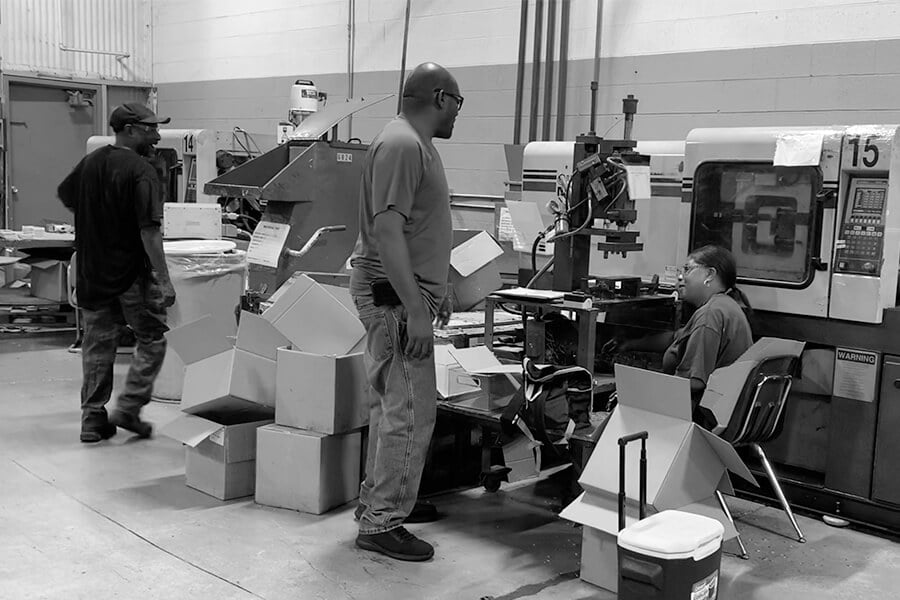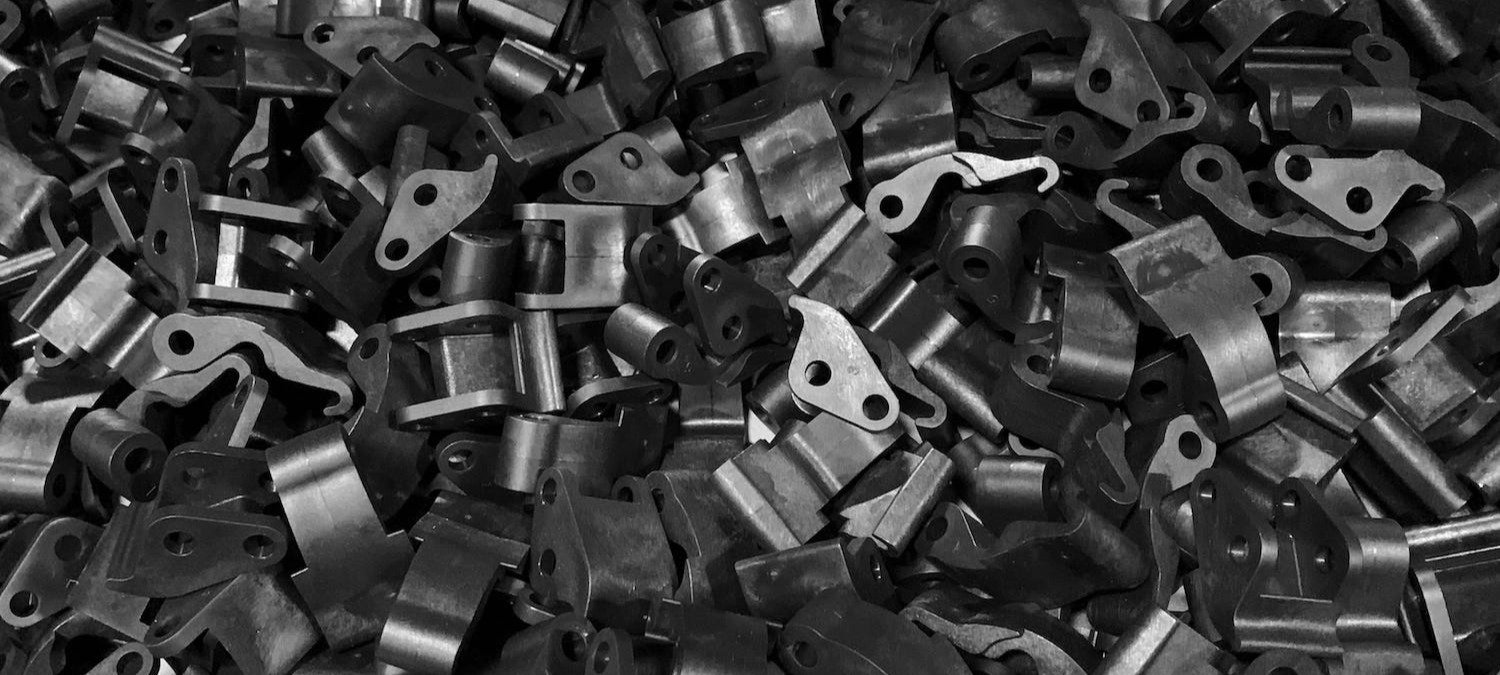Welcome to the world of plastic injection molding. This process might sound complex, but with a basic understanding of the key terms, you'll be well on your way to effective communication with plastic injection molding companies.
About the Terminology Used in Plastic Injection Molding
What is Injection Molding?
Injection molding is a manufacturing process where molten plastic is injected under high pressure into a specially designed mold. The plastic cools and hardens within the mold, taking on the shape of the mold cavity. Once cooled, the finished part is ejected, ready for use. This process is used to create a wide variety of plastic products, from simple bottle caps to complex car parts. If you’re interested in a deeper dive, we have an entire guide dedicated to the injection molding process here.
Why is it Important to Know These Terms?
Having a grasp of injection molding terminology allows for clear and efficient communication with plastic injection molding companies. When discussing your project, using these terms empowers you to ask informed questions about materials, processes, and potential challenges. This collaborative approach ensures you receive high-quality parts that meet your exact specifications.
In this article, we will review terminology for the process, materials, and machines.
Terms Used in the Injection Molding Process
By understanding these key areas, you'll gain a well-rounded understanding of the injection molding process, from start to finish. Here's a breakdown of some key terms used throughout the injection molding process:
Cycle Time: The total time it takes to complete one molding cycle, including all stages from mold clamping to part ejection.
Clamping: The process of securely closing the mold halves with high pressure to withstand the force of the injected plastic.
Injection: Molten plastic is forced under high pressure from the barrel of the machine into the mold cavity.
Dwelling: After the cavity is filled, a short period of time allows additional pressure to be maintained for optimal part density.
Cooling: The plastic cools and solidifies within the closed mold. Cooling channels within the mold help regulate temperature.
Side Action: In some cases, specific mold features require additional mechanisms (side actions) within the mold to create undercuts or complex shapes.
Terminology of the Plastic Injection Molding Mold
The mold itself is a crucial element, and here are some terms associated with it:
Mold: The two-piece metal tool that contains the cavity (or cavities) that shape the molten plastic.
Cavity: The hollow space within the mold that defines the shape of the final plastic part. A single mold can have multiple cavities to produce multiple parts per cycle.
Gate: The small opening in the mold that allows molten plastic to enter the cavity.
Core: A component within the mold used to create internal features or hollow sections in the part.
Draft: A slight taper on the sides of the mold cavity that allows for easier part ejection.
Runner: The channel system within the mold that carries molten plastic from the sprue (see below) to each cavity.
Cooling Channel: A network of channels machined into the mold that allows for circulation of coolant to regulate the temperature during the cooling stage.
Terminology for Finishing Parts
Once the parts emerge from the mold, some finishing steps may be required:
Flash and Deflashing: Excess plastic that seeps beyond the mold parting line is called flash. Deflashing refers to the removal of this unwanted material, typically through manual or mechanical trimming.
Annealing: A controlled heating and cooling process used to improve the strength and ductility of some plastic parts.
Surface Finish: The final appearance of the molded part's surface can be described using these terms:
- Gloss Finish: A shiny, reflective surface.
- Matte Finish: A smooth, non-reflective surface.
- Orange Peel Finish: A slightly textured surface resembling an orange peel.
Terms Used for Injection Molding Materials
The type of plastic material used significantly impacts the final product. Here are some key material-related terms:
Resin: The base plastic material used in injection molding.
Colorant: Pigments or dyes added to the resin to achieve the desired part color.
Dry Coloring: Adding color pigments in powder form directly to the resin pellets.
Additives: Substances blended into the resin to enhance specific properties like flame retardancy, UV resistance, or impact strength.
Agents: Chemical substances added to the resin to improve flow characteristics, mold release, or other properties.
Thermoplastic Materials: These are the most common resins used in injection molding. They can be repeatedly melted and solidified without significant degradation.
See here for an entire list of the plastic injection materials we work with at Molding Dynamics.
Terms Used for Injection Molding Machines
The injection molding machine itself is a complex piece of equipment. Here are some terms to familiarize yourself with:
Barrel: The heated cylinder where the plastic resin is melted and pressurized before injection.
Nozzle: The tip of the barrel that delivers the molten plastic into the mold cavity through the gate.
Ejector Pins: Pins within the mold that push the finished parts out of the cavity after cooling.
Movable Platen: The moving half of the machine that houses the clamping mechanism and opens/closes the mold.
Stationary Platen: The fixed half of the machine that houses the injection unit and the barrel.
Shot Capacity: The maximum amount of melted plastic the machine's barrel can hold, which determines the size and weight of the parts it can produce.
Semi-Automatic Molding Machine: A machine that requires manual intervention for some aspects of the process, such as part removal.
Terms Used for Defects in Plastic Injection Molding
Below are a listing of potential issues found when manufacturing injection molding parts.
Void: An empty space within the molded part, often caused by inadequate molding pressure.
Bubbles: Air pockets trapped within the plastic during molding, causing cosmetic defects.
Crazing: Cracks on a molded part that are a result of overstressing the plastic material.
Delamination: When two layers of a plastic part peel away from each other.
Blisters: Raised bumps on the surface of a molded part.
Sink Marks: Dimples or impressions on the surface of a mold part caused by the varying cooling rate of the material
Flow Lines: Patterns resulting from uneven plastic flow path.
Weld Lines: A visible line where two plastic material flows converged.
For More About Plastic Injection Molding
We hope this article has given you a solid foundation in the language of plastic injection molding. If you have any questions or require further clarification on these terms or the injection molding process itself, please don't hesitate to reach out to the experts at Molding Dynamics. Our team is here to discuss the specifics of your project and guide you on the best plan and materials to achieve your desired outcome.
We can help you navigate the world of injection molding and ensure your project runs smoothly, from initial concept to final, high-quality parts. Contact Molding Dynamics today and let's get started on turning your vision into reality!






